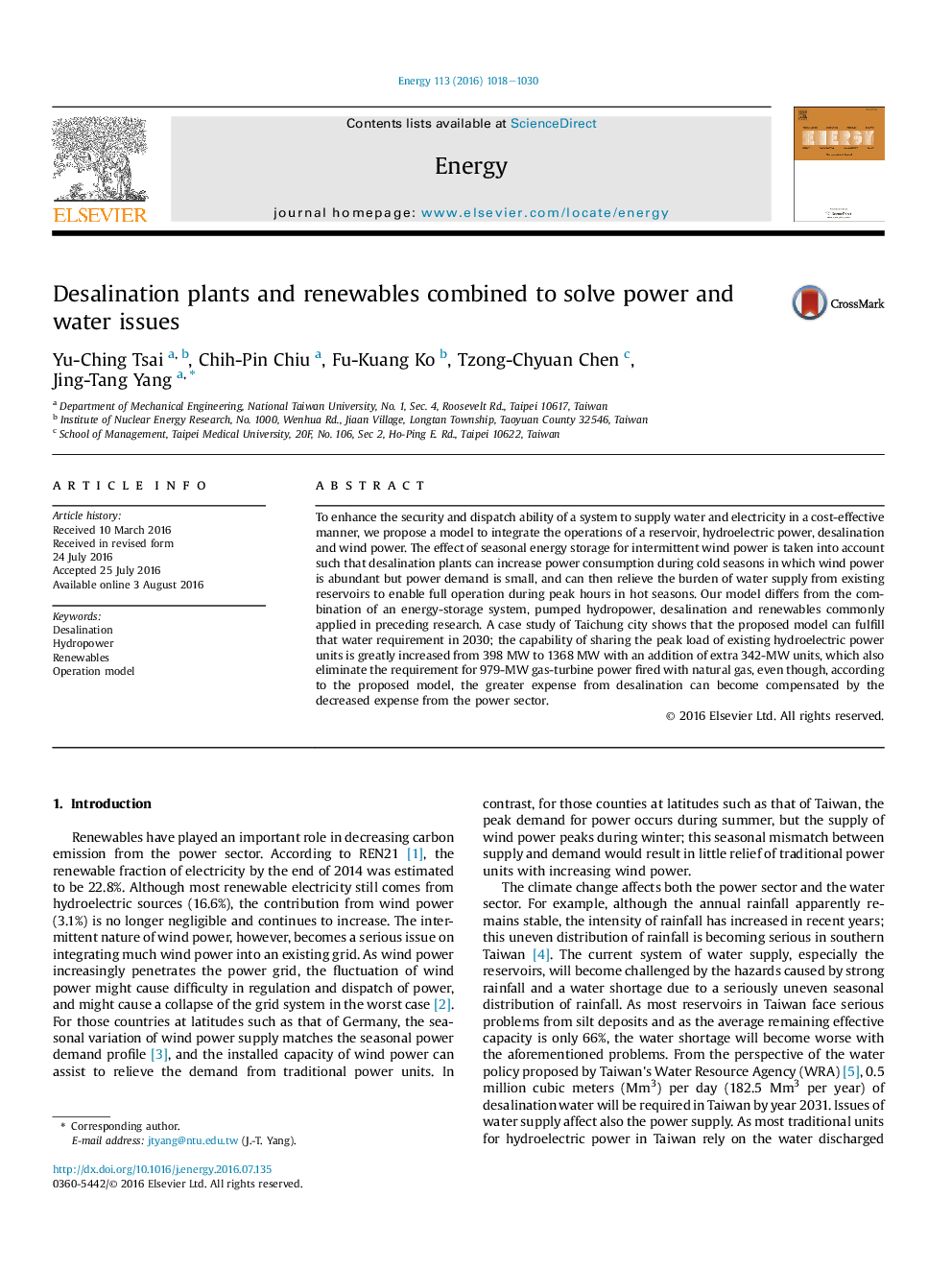| Article ID | Journal | Published Year | Pages | File Type |
|---|---|---|---|---|
| 1730801 | Energy | 2016 | 13 Pages |
Abstract
To enhance the security and dispatch ability of a system to supply water and electricity in a cost-effective manner, we propose a model to integrate the operations of a reservoir, hydroelectric power, desalination and wind power. The effect of seasonal energy storage for intermittent wind power is taken into account such that desalination plants can increase power consumption during cold seasons in which wind power is abundant but power demand is small, and can then relieve the burden of water supply from existing reservoirs to enable full operation during peak hours in hot seasons. Our model differs from the combination of an energy-storage system, pumped hydropower, desalination and renewables commonly applied in preceding research. A case study of Taichung city shows that the proposed model can fulfill that water requirement in 2030; the capability of sharing the peak load of existing hydroelectric power units is greatly increased from 398Â MW to 1368Â MW with an addition of extra 342-MW units, which also eliminate the requirement for 979-MW gas-turbine power fired with natural gas, even though, according to the proposed model, the greater expense from desalination can become compensated by the decreased expense from the power sector.
Related Topics
Physical Sciences and Engineering
Energy
Energy (General)
Authors
Yu-Ching Tsai, Chih-Pin Chiu, Fu-Kuang Ko, Tzong-Chyuan Chen, Jing-Tang Yang,
